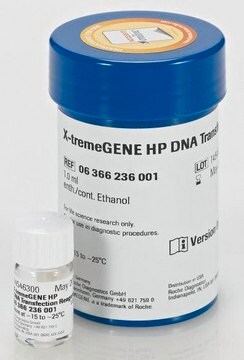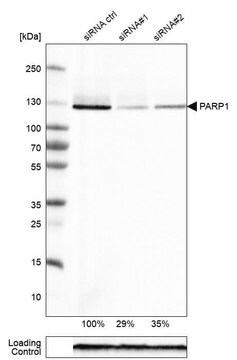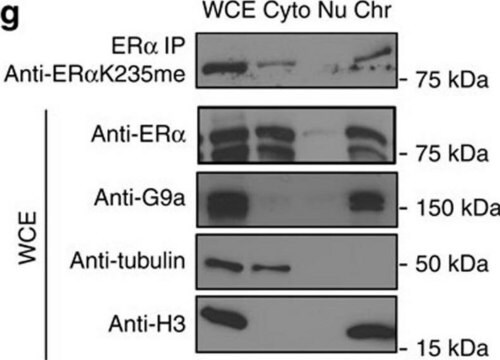詳細
ColorWheelColorWheel® technology is a novel and proprietary method of creating your own antibody and dye combinations for use in flow cytometry. By incubating any ColorWheelColorWheel® antibody with any ColorWheelColorWheel® dye, researchers can quickly and simply produce primary conjugated antibodies for use in single color or multicolor flow cytometry analysis. Each ColorWheelColorWheel® antibody and dye is lyophilized for long-term storage, allowing for simplicity and flexibility without compromise. ColorWheelColorWheel® technology requires both ColorWheelColorWheel® antibody and ColorWheelColorWheel® dye for Flow Cytometry application.
We are committed to bringing you greener alternative products, which adhere to one or more of The 12 Principles of Green Chemistry.This product is Preservative-free, lyophilized product for enhanced stability and allow for ambient shipping and thus aligns with "Waste Prevention", "Designing Safer Chemicals" and "Design for Energy Efficiency".
Click here for more information.
特異性
Clone TU-20 is a mouse monoclonal antibody that detects b-Tubulin III.
免疫原
KLH-conjugated linear peptide corresponding to 8 amino acids from the C-terminal region of human b-Tubulin III.
アプリケーション
Quality Control Testing
Evaluated by Flow Cytometry in Fixed and permeabilized SH-SY5Y cells.
Flow Cytometry Analysis: Intracellular staining of one million fixed and permeabilized SH-SY5Y cells was performed using 5 μL of a 1:1 mixture of Cat. No. CWA-1104, Anti-Human ?-Tubulin III (TU-20) ColorWheelColorWheel® Dye-Ready mAb and Cat. No. CWDS-PE ColorWheelColorWheel® Antibody-Ready Phycoerythrin (PE) Dye or an equivalent amount of Cat. No. CWA-1013 Mouse IgG1 isotype control and Cat. No. CWD-PE ColorWheelColorWheel® Antibody-Ready Phycoerythrin (PE) Dye.
Tested Applications
Flow Cytometry Analysis: Intracellular staining of one million fixed and permeabilized SH-SY5Y cells was performed using 5 μL of a 1:1 mixture of Cat. No. CWA-1104, Anti-Human ?-Tubulin III (TU-20) ColorWheelColorWheel® Dye-Ready mAb and Cat. No. CWDS-APC ColorWheelColorWheel® Antibody-Ready Allophycocyanin (APC) Dye or an equivalent amount of Cat. No. CWA-1013 Mouse IgG1 isotype control and Cat. No. CWDS-APC ColorWheelColorWheel® Antibody-Ready Allophycocyanin (APC) Dye.
Note: Actual optimal working dilutions must be determined by end user as specimens, and experimental conditions may vary with the end user
ターゲットの説明
Tubulin beta-3 chain (UniProt: Q13509; also known as Tubulin beta-4 chain, Tubulin beta-III, beta-Tubulin 3) is encoded by the TUBB3 (also known as TUBB4) gene (Gene ID: 10381) in human. Tubulin is one of several members of a small family of globular proteins, which polymerize to form microtubules. The most common members of the tubulin family are a-tubulin and b-tubulin that assemble onto microtubules forming large polymers. Tubulin binds two moles of GTP, one at an exchangeable site on the b chain and one at a non-exchangeable site on the a chain. GTP-binding site of b-tubulin III is localized to amino acids 140-146. b-tubulin III is a unique microtubule subunit that is expressed exclusively in neurons, but its higher expression is also observed in most cancerous tissues. Due to it is unique expression pattern it is often utilized as a marker to identify neuronal cells from other brain cells such as glia. It plays a critical role in proper axon guidance and maintenance. It undergoes phosphorylation on serine 172 by CDK1 during the cell cycle, from metaphase to telophase, but not in interphase and this phosphorylation inhibits tubulin incorporation into microtubules. Increased expression of b-tubulin III been shown to correlate with resistance to anti-microtubule agents. Mutations in TUBB3 gene have been linked to congenital fibrosis of extraocular muscles that causes ocular motility disorder affecting extraocular muscles innervated by the oculomotor and/or trochlear nerves. Some mutations are also known to cause cortical dysplasia that results in aberrant neuronal migration and disturbed axonal guidance. (Ref.: Poirier, K.., et al. (2010). Hum. Mol. Gen. 19(22); 4462-4473; Tischfield, MA., et al. (2010). Cell. 140(1); 74-87; Katsetos, CD., et al. (2003). J. Child. Neurol. 18(12); 851-866).
物理的形状
Lyophilized from PBS containing D-Mannitol and Sucrose, normal appearance is a dried pellet. Reconstituted antibody solution is stable and functional as assessed by functional testing. Contains no biocide or preservatives, such as azide.
再構成
1.0 mg/mL after reconstitution at 25 μL in PBS. Please refer to guidance on suggested starting dilutions and/or titers per application and sample type.
保管および安定性
Recommend storage of lyophilized product at 2-8°C. Before reconstitution, micro-centrifuge vials briefly to spin down material to bottom of the vial. Reconstitute each vial by adding 25 μL PBS. Protect from light.
法的情報
ColorWheel is a registered trademark of Merck KGaA, Darmstadt, Germany
免責事項
Unless otherwise stated in our catalog or other company documentation accompanying the product(s), our products are intended for research use only and are not to be used for any other purpose, which includes but is not limited to, unauthorized commercial uses, in vitro diagnostic uses, ex vivo or in vivo therapeutic uses or any type of consumption or application to humans or animals.









